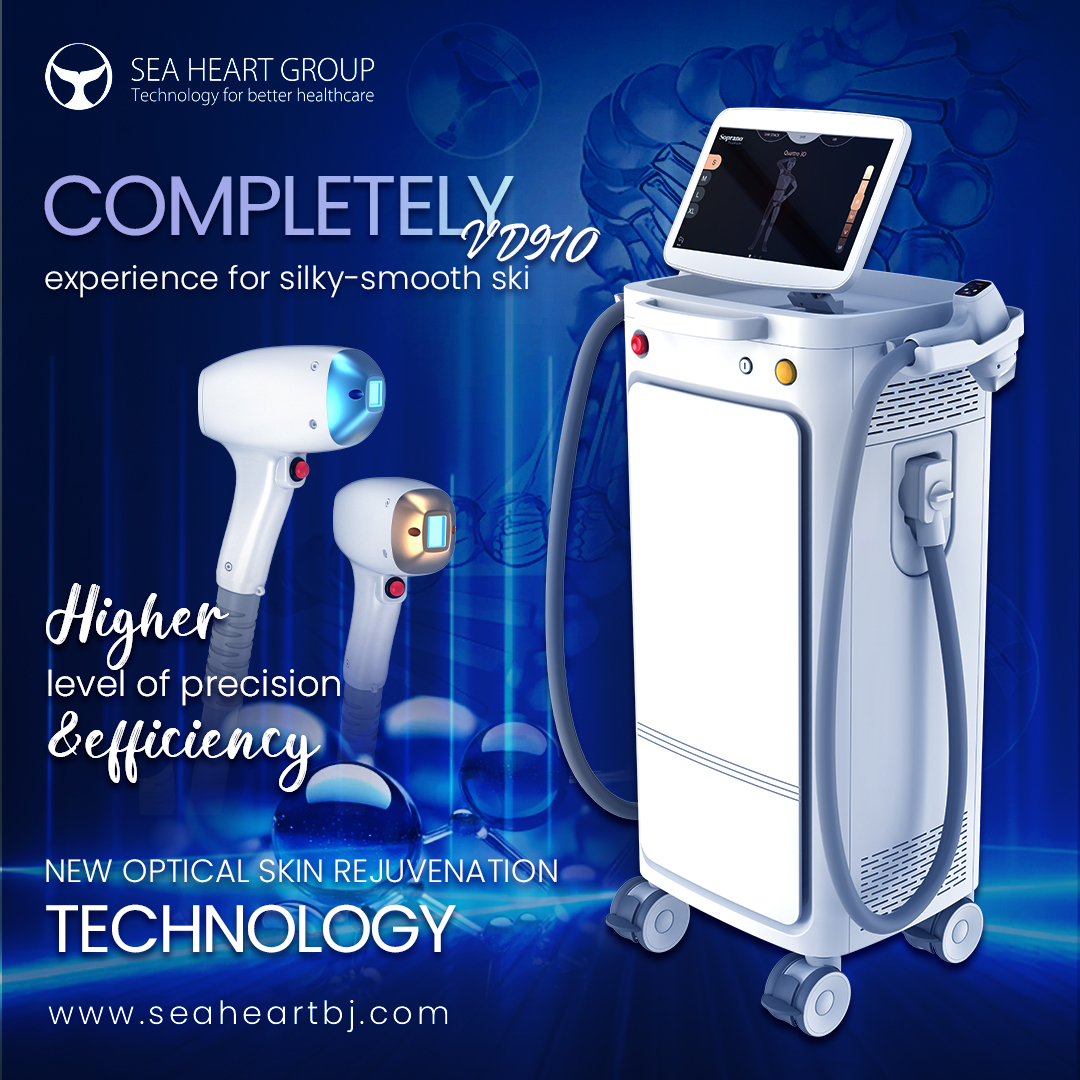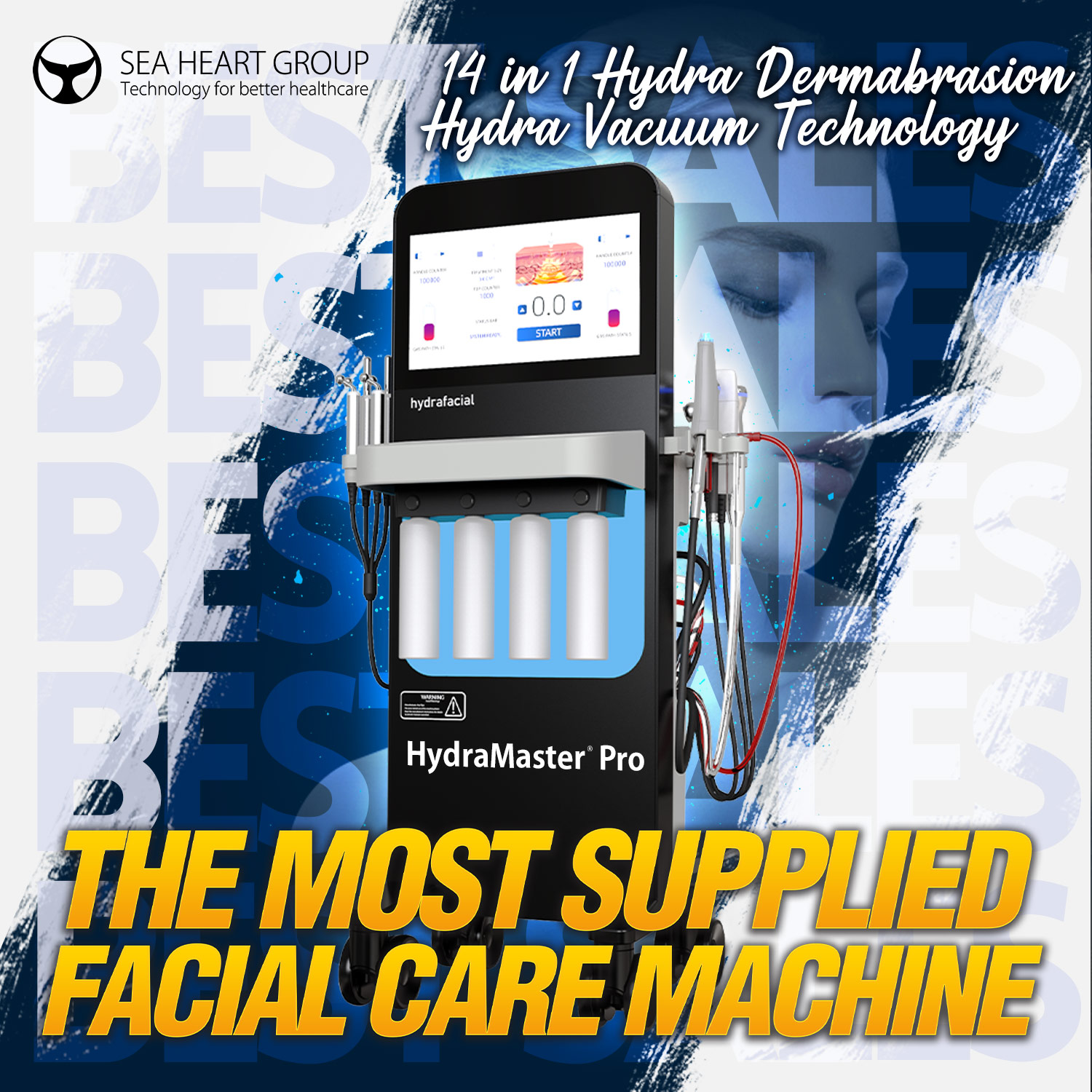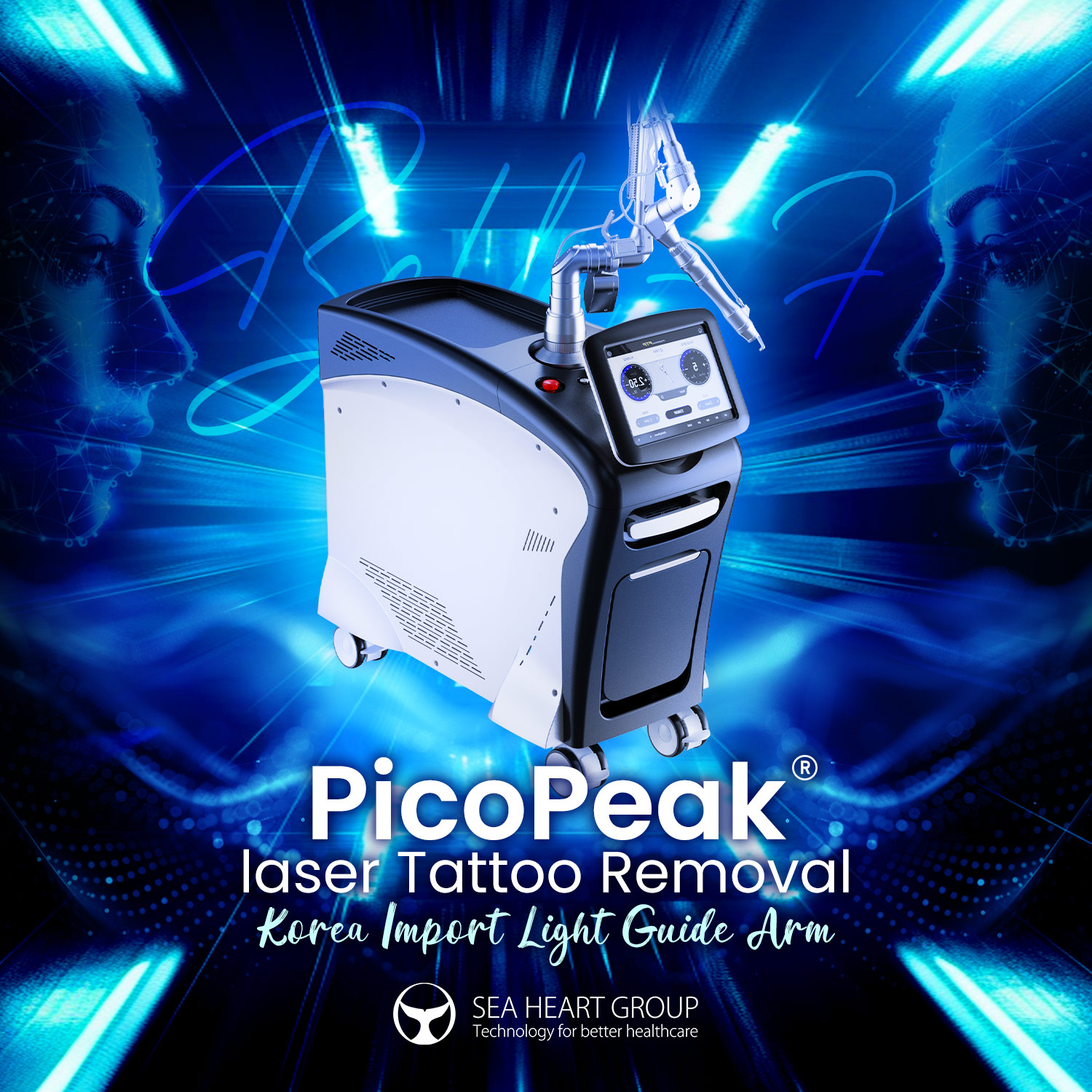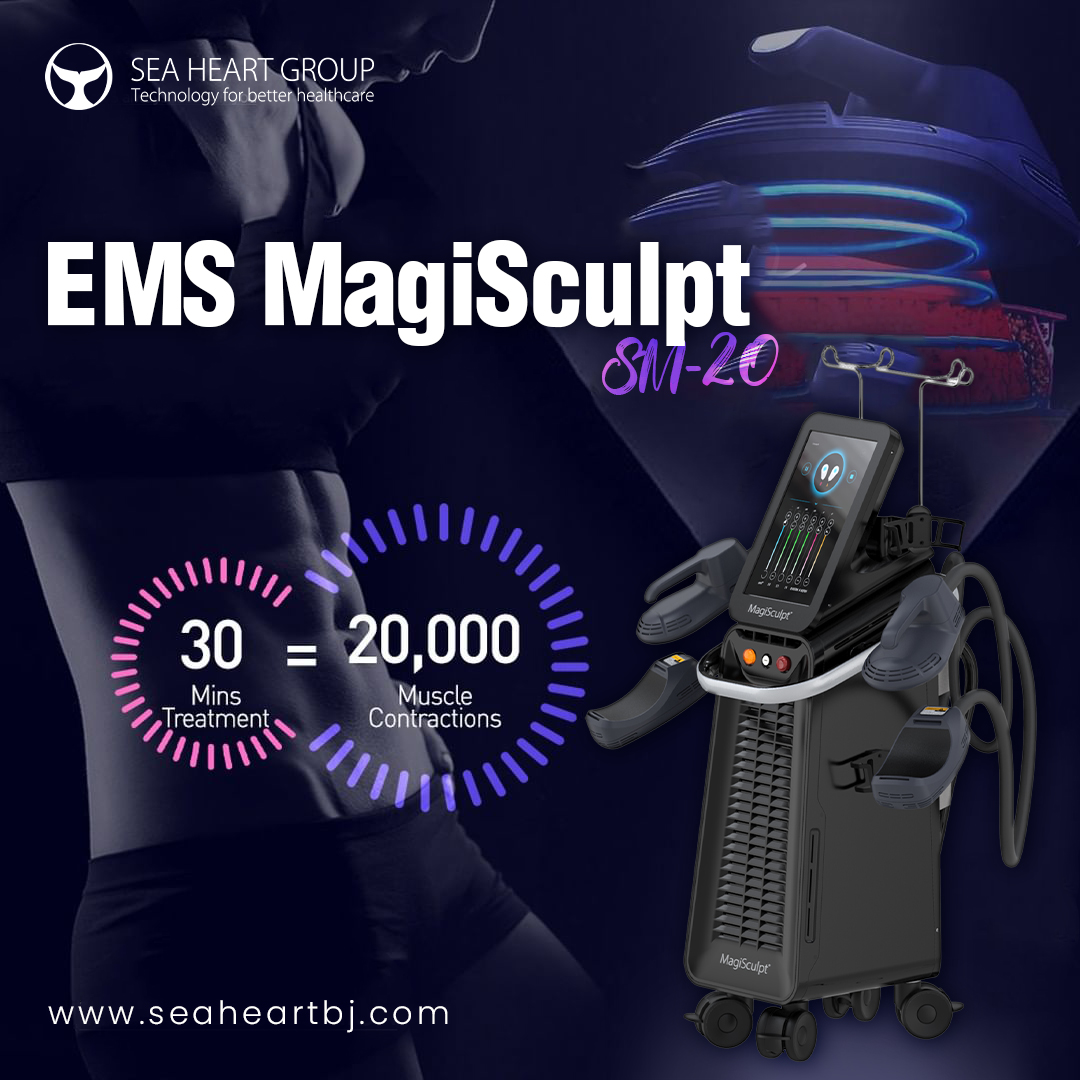The market for tattoo removal has exploded over the last decade, and numerous industry reports show laser tattoo removal to be one of the fastest-growing treatments for cosmetic laser practitioners. SEA HEART GROUP is the only exclusive manufacturer of Q-switched lasers devoted to the profitable niche market of treating unwanted tattoos.
Laser tattoo removal is easy to perform and yields impressive results. Advanced Q-switched laser technology, based on decades of clinical research, creates enhanced tattoo ink shattering with less risk to patient skin. Equipped with superior SEA HEART advanced technology, practitioners can now enter the field of laser tattoo removal with confidence.
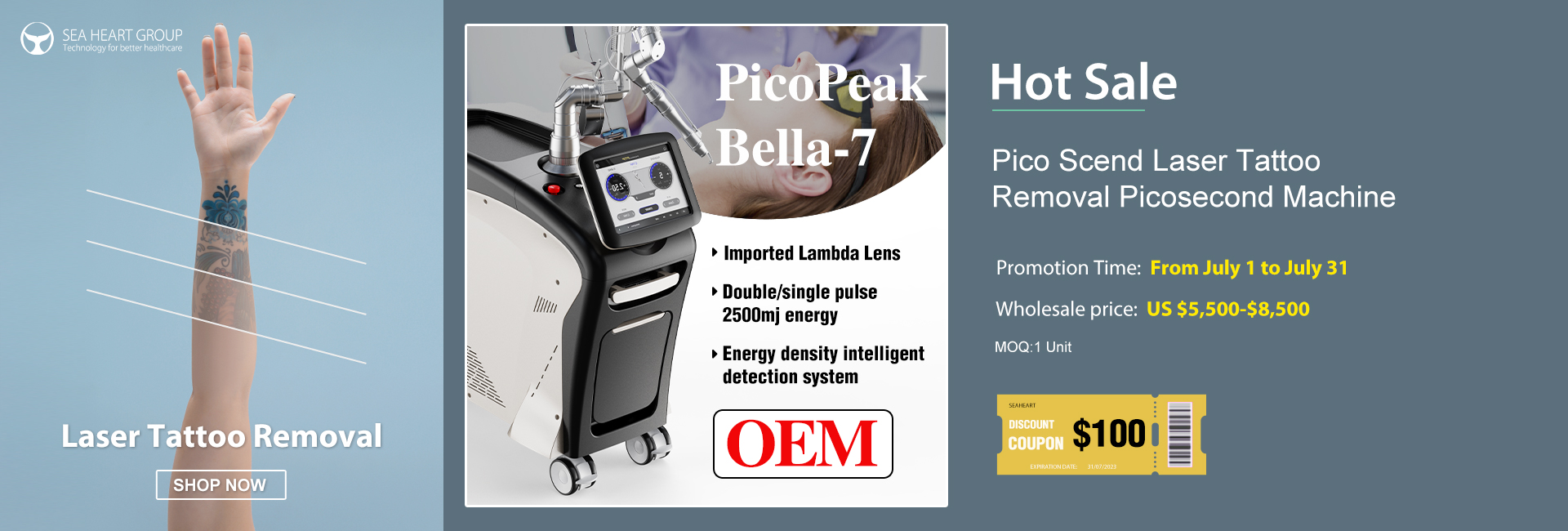
Tattoo Removal Treatment
Tattoo removal treatment is a procedure done to try to remove an unwanted tattoo. Common techniques used for tattoo removal include laser surgery, surgical removal, and dermabrasion. laser treatment for tattoo removal works to break up pigment for permanent removal of the ink. The laser energy works to slowly break up and release the pigment from the skin. With each treatment, your tattoo will slowly fade away. After a course of treatments, your tattoo will be virtually unnoticeable, without harm to your skin.
How Does Laser Tattoo Removal Work?
Our SEA HEART Q-Switched laser produces short pulses that pass, without harm, through the upper layers of the skin to target and break up the unwanted tattoo pigment. This energy from the Q-Switch laser shatters the tattoo pigment into small nano (thousands of tiny molecules) )-)-sized particles that are then removed gradually by the body’s regular metabolism and lymphatic drainage system. Throughout your treatment series, your tattoo will gradually fade away. The laser tattoo removal process is a non-surgical and non-invasive treatment and can be performed with virtually no downtime.
532nm: for treatment of epidermal pigmentation such as freckles, solar lentigo, epidermal melasma, etc.(mainly for red and brown pigmentation)
1064nm: for treatment of tattoo removal, dermal pigmentation, and certain pigmentary conditions such as Nevus of Ota and Hori’s Nevus. (mainly for black and blue pigmentation)
1320nm: skin whitening, freckle, acne, face blackhead/black spot removal.
How Often Can I Receive Laser Tattoo Removal Treatment?
Your next permanent tattoo removal should be no sooner than 8 to 12 weeks. When the laser works it's magic to break up the pigment. Your body is responsible for eliminating the ink. It does this as a natural process of metabolization and blood flow, but it needs 8 to 12 weeks to fully resolve targeted ink molecules. Each laser session breaks up only a certain amount of the tattoo, so you will need to return for successive treatments until the tattoo fully resolves.
How Many Sessions Of Tattoo Removal Treatment Do I Need?
With all laser tattoo removal treatments, we suggest a min. of 6 sessions at least, spaced 8 to 12 weeks apart. While many may see sensational results after just a few treatments, there are cases/types of tattoos where one may require more treatments to fully resolve. Our technology, the (seaheartbj.com) SEA HEART Q-Switched tattoo removal laser targets pigment, so the particular color and type of ink to be removed largely determines how relatively easy or challenging the tattoo removal process may be for your unique tattoo. How many treatments you will need to vary on a couple of factors of the tattoo you want to be treated with: -The color of the ink -Your skin tone -Any scarring that may be present -The amount of ink that was used.
Who Can Be Treated With Tattoo Removal Lasers?
Generally, anyone with an unwanted tattoo can be treated, with the following exceptions: Pregnant or nursing women. Those with an active infection at or near the desired treatment area.Those with heart problems, cancer, a history of seizures, and immune system disorders.Those with implanted medical devices. Those with a history of Keloid Scarring as tattoo removal may cause keloid scarring.
Is Laser Tattoo Removal Treatment Painful?
When the treatment is initiated, you may feel a sensation similar to tapping or a rubber band snapping. The process is fast and simple and once treatment is done, there is no more pain. So it is painless tattoo removal.
What Should Be Noticed During The Tattoo Removal Treatment?
During permanent tattoo removal treatment, the operator should make a right angle between the handle and the treatment area to make sure the light could shoot upright and avoid losing the energy of light as least as possible. Painless tattoo removal treatment for a tattoo in the eyebrow, eye line, and lip line, the spot of light should lap over a little to move in line. During treatment for spot or nevus, the operator should treat a small area at one time, the best result should be that the treatment area seeps a little blood.
What Is The Aftercare For Laser Tattoo Removal?
We ask that you refrain from hot tubs, swimming pools, dips in the ocean, or water sports until the skin’s surface has completely healed and sealed up again-meaning there should be no openings in the area targeted. We will ask that you continue to keep the treated area moisturized. Do not pick peel or scratch the treatment area. Let the area heal on its own. Cover the treated area with a thick bandage if you are planning on being in the sun. It is important to protect the treated area afterward from the sun.
Laser Tattoo Removal Before And After Photos
View our Abundance gallery below of tattoo removal before and after photos provided by leading dermatologists and aesthetic providers from around the world.
FAQ
Is this a real picosecond laser, and how can it be proven?
Real video demonstrations can prove it, but selling to customers based on their tests might not work because they lack the necessary equipment and expertise.
Those with some knowledge understand that a true picosecond laser creates a bright spot at the front end of the emitting device, due to the air ionization effect. Adjusted Q-switched (nanosecond) lasers do not exhibit this phenomenon. Some may try to simulate picosecond effects using 1.5 ns lasers, which is a kind of pseudo picosecond.
In summary, if a customer can't afford a picosecond laser, explaining further won't help much. In such cases, it's better to suggest alternatives.
Is a single-lamp single-rod or dual-lamp dual-rod better?
All else being equal, dual-lamp dual-rod is better. In practical terms:
Single-lamp single-rod uses an 8mm sensing rod with a cost of around $5000, producing a maximum of 800mj per single pulse and 1500mj per double pulse, with no light leakage. This setup uses imported UK lamps costing around $1000.
Dual-lamp dual-rod employs 6+7mm resistance rods, with a cost of approximately $1500. It produces 700-800mj per single pulse and has no double pulse function, with a slight light leakage of around 100mj. These setups use local lamps that cost less than $100 each.
The number of lamps alone doesn't matter; it's the quality of the rods that counts. High-quality sensing rods are the best, followed by military-grade resistance rods, and lastly regular resistance rods. Quality can be discerned, and there's no way to deceive an informed buyer. A professional test is often needed.
How can I see the internal structure of the machine? Do you have pictures of the inside?
For laser internal structures, people can't tell or don't understand their significance. Typically, customers are concerned with the number of lamps and rods. Images of the entire machine's interior can be provided upon request.
Why is your product more expensive than others claiming to be picosecond lasers?
In reality, very few are true picosecond lasers; this includes us. Our higher price is mainly due to the cost of materials. True picosecond lasers have prices ranging from $15,000 to $20,000. The market includes devices priced lower than this, even as low as $12,800 in Guangzhou, but they are not true picosecond lasers.
For laser components:
A high-end single-lamp single-rod laser costs around $24,000.
The optical arm costs around $5,500.
The power supply costs around $3,500.
For dual-lamp dual-rod:
It costs around $7,500.
The optical arm costs around $3,000.
The power supply costs around $2,100.
Price differences are substantial, and lower-priced options typically cater to a different customer segment. Trying to convince customers otherwise might not be effective. Focusing on the quality, performance, and long-term reliability of the product is more important.
Is this a Q-switched Nd YAG laser or a true PICO laser?
The term "Q-switched" refers to nanosecond pulse compression technology. Nanosecond lasers typically operate at 5000 picoseconds (ps). While some claim 5000ps lasers as picosecond, true picosecond lasers are typically below 800ps. However, without specific standards, the distinction can be challenging. Some call 5000ps Q-switched lasers picosecond, but they target different consumer groups.
Size and weight? Differences in various configurations?
Refer to the marketing materials for these details. If comparing from high to low, you can explain the differences. However, there's no need to explain the differences when comparing from low to high, as the price difference is substantial.
What is the wavelength of this device, and can it remove tattoos of all colors?
Refer to the product manual for information on wavelengths and tattoo color removal capabilities. Yellow cannot be removed with lasers.
Can it be used with a regular power source?
Yes, it can.
I heard wavelengths 694nm / 532nm / 1064nm are crucial. What about these?
Different wavelengths serve different purposes. 1064nm is common for tattoo removal, while 532nm is used for red and orange pigments. 694nm is less common and typically not used for tattoo removal.
What does the machine interface look like, and why is it different from the main picture?
Higher-end models have different interfaces. Lower-end models use standard interfaces. The primary differences can be seen in the marketing materials.
What's the difference between the high-end and low-end versions?
Refer to the marketing materials for details.
Does this device have crystals? What's the thickness?
If referring to laser rods, it's in the marketing materials. However, these questions may be asked by those who don't understand well, and some people use these concepts to mislead customers.
A customer asked about a 350ps pulse width, but it doesn't display on the interface. Should it be added?
It doesn't display. If customers request it, it can be added.
A customer asked if we were from Han's Laser.
We are not. Claiming to be Han's Laser is simply an imitation; the packaging may be similar.
Can the brow washing machine be used immediately after tattoo removal, without any waiting time?
No, typically, skin needs 3-4 weeks to recover from skin damage before further procedures.
Which optional handles should I buy, and what are the differences?
Refer to the marketing materials for differences. Suggest handles based on customer needs.
I'm considering another machine with a Coherent brand laser, 1200mj @1064nm, 3000w power supply, 7lt water cooling, and dual-rod laser. Is it a true picosecond laser?
First, there's no Coherent laser; even if there were, it would be unaffordable. Second, a 3000w power supply is unlikely; typically, they're 1000w. Third, the pulse width is almost certainly a fabrication. You should evaluate these claims carefully.
Who are your main reputable competitors?
We're considering Sea Heart, Sincoheren, and Winkonlaser.

